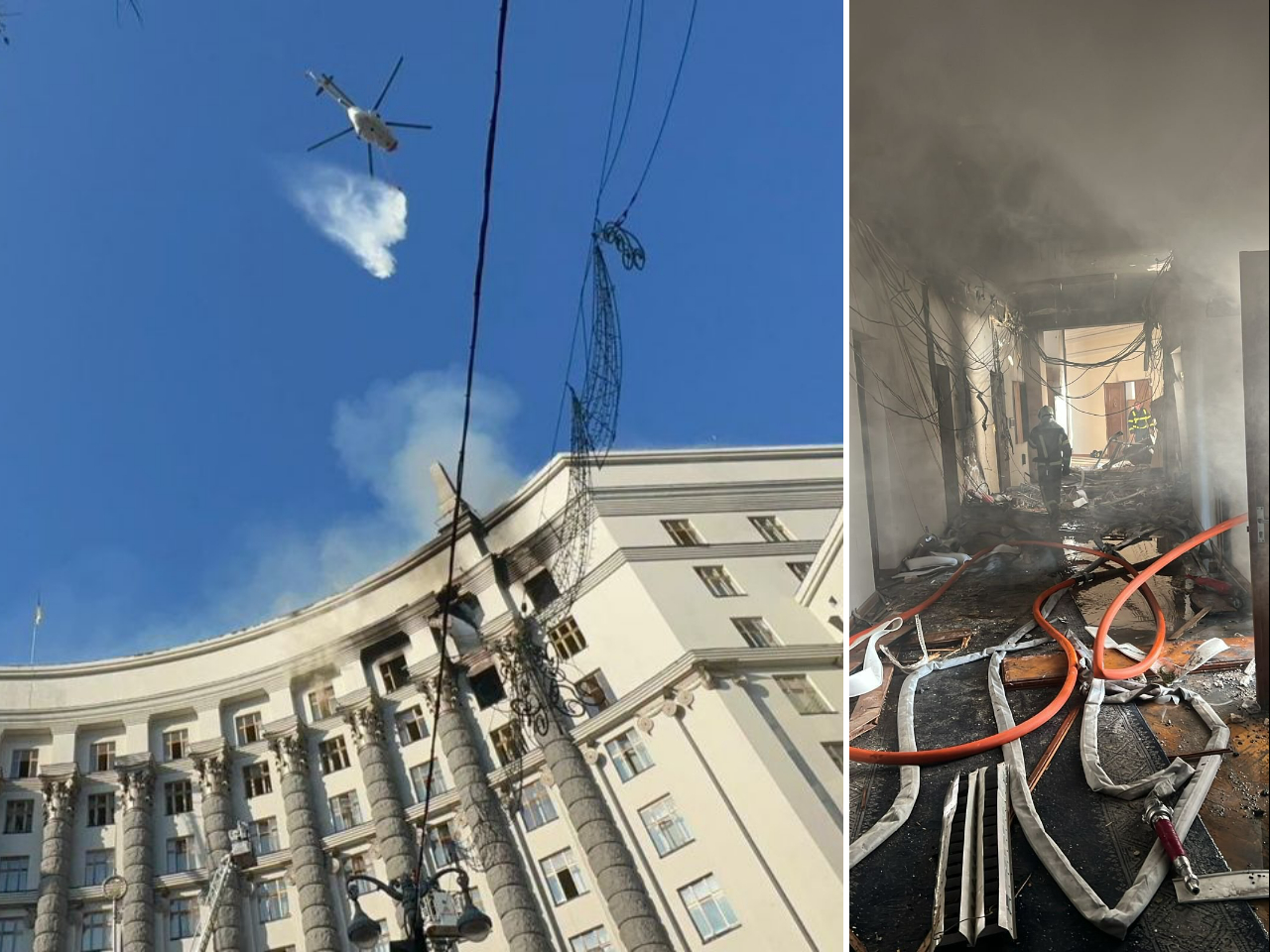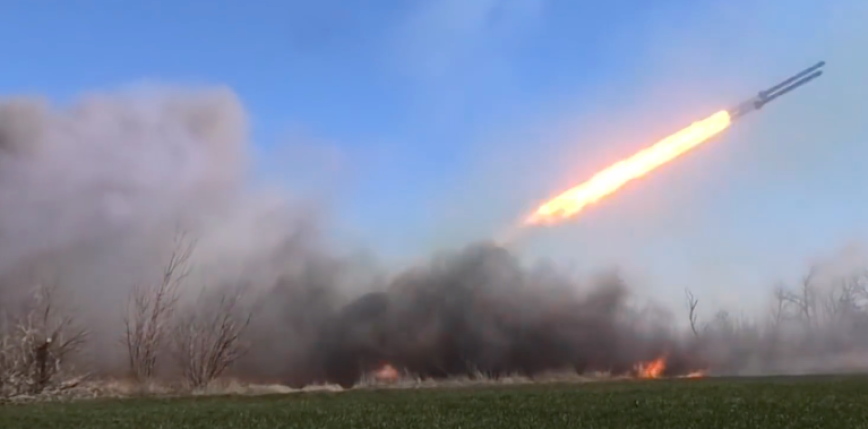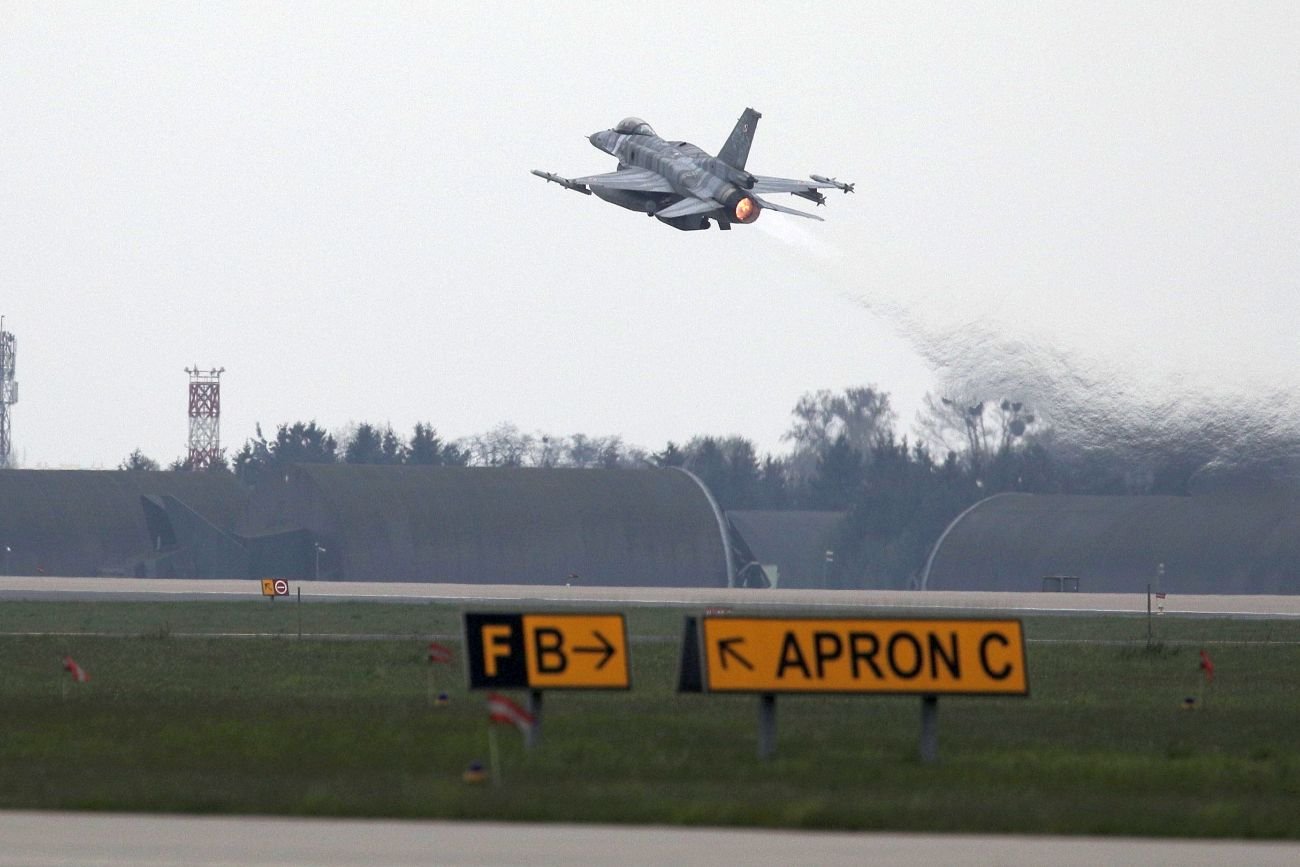Comment summary:
·Over 2 million papers from the Russian MON were revealed by investigative journalists – including data on atomic bases in Jasny.
·The leak reveals the weaknesses of Russian atomic infrastructure from silo plans to sensor location.
·The usage of western building components has been revealed despite the applicable sanctions Knauf's case casts a shadow on the effectiveness of the current restrictions.
·Experts: Russia may be forced to rebuild part of the infrastructure and change the doctrine of deterrence.
·The convergence with Ukrainian operation “Pavutine” reinforced the intellectual effect and information chaos on the Russian side.
1. Introduction
In May 2025, the planet circulated news of 1 of the most serious military spills of fresh years. Investigators from Danish Danwatch and German “Der Spiegel” revealed that more than 2 million papers from the Russian Ministry of Defence — containing top-secret atomic infrastructure data — were publically available for months They went online through a public procurement system, as annexes to tenders for construction contractors [1]..
The focus was on 2 rocket bases located close Jasnya in the Orenburg Oblast. This is 1 of the eleven strategical locations in Russia from which long-range missiles may be fired. As “Der Spiegel”, Since 2019, the Kremlin has claimed that it is at this base that the Awangard rocket strategy is stationed — recognized as 1 of the most modern in the Russian atomic arsenal [1]..
 Screenshot showing the location of the rocket base in the Jasný region (Orenburg Oblast, FR)
Screenshot showing the location of the rocket base in the Jasný region (Orenburg Oblast, FR)Source: Google Maps, accessed: 31.05.2025
2. Content of leaked documents
The leak in question covers more than 2 million papers related to Russian military orders. They're not random files. The revealed data shows an highly detailed image of Russian atomic infrastructure — from the method level to the regular lives of soldiers. The papers included, among others, detailed schematics of rocket base infrastructure, plans for underground tunnels, deployment of silos, as well as detailed information on safety systems: from camera location, seismic sensors and radiation, to IT installations, alarm signaling, cable positioning and window security.
The plans of the full infrastructure were besides published — watch towers, canteens, gyms, medical chambers, as well as weapons and recreational facilities. The papers even contained the contents of posters on the walls: “Stop! Turn around! Forbidden zone, “Military oath” or “Principles of Shoe Care” [1]. From an analytical perspective, it is this item — coming down to the standard of everyday life — that makes the data of large importance not only operational but besides psychological.
Importantly, according to journalists Danwatch and ‘Der Spiegel’, any of these papers were attached to the tenders announced by the Russian Ministry of Defence in 2024, even though already in 2020 the Russian Duma adopted a law establishing a closed tendering system, available only to proven national entities. However, as it turned out, the tender participants continued to print delicate data in public databases for a long time — frequently by deficiency of sight or coordination[1].
Journalists managed to systematically retrieve these files through the usage of servers located in Russia, Kazakhstan and Belarus[1]. In this way, it was possible for many months to “extract” information from open sources before Russia completely restricted access.
The material shows that Russia has conducted an extended modernization of its rocket complexes in the Orenburg region, especially close Jasnya, where they are stationed 368. and 621. Rocket Regiment [2]. Both are equipped with Avangard systems, or hypersonic rockets capable of carrying atomic warheads. According to Danwatch's account, the bases "were rebuilt practically from scratch". fresh barracks, warehouses, command stations, guards and kilometers of underground tunnels were built.
 Base of the Russian 368th Rocket Regiment – the state of “before modernization” (left) and “after” of 2024 (right) – satellite photograph published by BBC Russia, citing Danwatch's investigative materials.
Base of the Russian 368th Rocket Regiment – the state of “before modernization” (left) and “after” of 2024 (right) – satellite photograph published by BBC Russia, citing Danwatch's investigative materials.Source: BBC Russia,https://www.bbc.com/Russian/articles/ceqg0319wweo [accessed: 30.05.
 Base of the Russian 621 Rocket Regiment – the state of “before modernization” (left) and “after” 2024 (right) – satellite photograph published by BBC Russia, citing Danwatch's investigative materials.
Base of the Russian 621 Rocket Regiment – the state of “before modernization” (left) and “after” 2024 (right) – satellite photograph published by BBC Russia, citing Danwatch's investigative materials.Source: BBC Russia,https://www.bbc.com/Russian/articles/ceqg0319wweo [accessed 30.05.2025].
Leaked documents, which form part of a collection of more than 2 million files, contain accurate architectural plans, interior building layouts and detailed material order records. The analysis of satellite materials published by Danwatch confirms the scale of the reconstruction. It includes fresh roads, explosion-resistant facilities and enhanced protective infrastructure. Although the authors do not indicate the exact date of execution of the photographs “before modernization”, the “after” images date back to 2024.[3]. The supply records clearly show that immense amounts of steel, cement, bricks, sand and insulating materials have been used. 1 of the more controversial themes is that any of these materials came from imports, including the German company Knauf, known for producing finishing and construction materials [4]. This raises serious questions about the effectiveness of sanctions and how they are circumvented. Knauf rapidly issued a message in which he denied any cooperation with the Russian MON. The company explained that their Russian branches only sale products to independent distributors [5]. From a formal point of view, this may be in line with reality. However, this case shows how hard it is in practice to control the final recipient of materials in the country conducting the war.
The usage of Western components in the expansion of strategical infrastructure — silos and rocket bases — undermines assurance in sanctions as an effective tool of political pressure. There are besides questions about the work of companies that are inactive operating in the Russian market, and about the real control they have over what is going on with their products. Especially erstwhile they can go to objects of key military importance.
3. strategical importance
What came out is not just a curiosity, but a real threat to Russian national security. As Hans M. Kristensen of the Federation of American Scientists notes, this is the first time we have specified direct and detailed insights into the functioning of closed, closely guarded Russian atomic bases. So far, experts could trust mainly on satellite images. Now, thanks to the leak, you can almost “look underground.” A erstwhile British military intelligence officer, Philip Ingram, assessed the data as “the highest level of intelligence knowledge”. simply put, this is precisely the kind of information that Western services dream of. With specified knowledge, we can not only identify defensive weaknesses, but even plan circumstantial scenarios of impact or sabotage. Norwegian expert Tom Roseth even went to the conclusion that Russia could be forced to completely rebuild part of its atomic infrastructure. Only to avoid a situation where its location or safety will be “readable” for possible opponents [1]. specified a redevelopment is not only a immense cost. It's besides time, risk, and request to redesign defence doctrines.
4. Russian media and infosphere reactions
Despite the seriousness of the situation, the authoritative Russian media did not pay any attention to the issue of the leak. The Ministry of Defence of the Russian Federation did not publically address the case, and in media specified as TASS, RIA Nowosti or Rossija 24 vainly search for any messages or analyses. This silence may indicate an effort to minimize image effects or, as likely, a deficiency of a ready-made consequence plan to specified unprecedented intelligence threats.
On the another hand, in the Russian infosphere (especially on the Telegram) the subject was not completely silenced. The channels linked to the army and military environments commented on the matter, though frequently with ironic distance or accusations against the West. For example, the "Два майора" channel, which watches over 1.2 million users, suggested that the full case was "Western media hysteria" aimed at creating fear in the European Union and justifying the increase in arms spending. According to them, the modernisation of Russian atomic forces has been going on for a long time and does not change the "strategic balance" between powers [6].
This message fits into the classical Russian communicative of "bad western propaganda" and intentional demonizing Russia. Although authors do not deny the modernization, they effort to present it as a average and planned process, not a origin for concern. In reality, however, the very presence of specified detailed plans in open circulation is simply a immense threat to Russia — and the fact that this is not officially said, alternatively confirms it.
5. The importance of the spill and its strategical implications
Although modern information conflicts have brought many leaks, the case of the Russian Ministry of Defence is far beyond the acquainted scheme. We are talking not about individual files or random data, but about over 2 million papers containing complete documentation on 1 of the most delicate parts of Russian military possible — atomic infrastructure.
Russia, which builds its image of global power on the aura of strength and mystery, experienced symbolic exposure. The disclosure of method plans, safety schemes, cameras and radiological sensors, and even the interiors of rocket buildings (including the contents of posters on the walls) undermines not only operational security, but besides undermines the intellectual effect of “inaccessibility” of Russian strategical installations. It's a blow to the foundations of the Russian doctrine of deterrence.
From the position of the West and Ukraine, this data represents a possible origin of operational knowledge, allowing for a more complete image of the opponent's infrastructure in the technical, organisational and logistical dimension. It is peculiarly worrying that they have remained publically available for a long time, which raises serious questions about the effectiveness of Russian interior control mechanisms. present it is hard to find whether this was the consequence of a systemic error, administrative chaos or interior sabotage.
It is worth noting the interesting timing between the leak of secret papers of the Russian Ministry of Defence and the culmination of Operation “Pavutine” — 1 of the most spectacular actions of the Ukrainian peculiar services since the beginning of the war. The operation itself, according to president Zelenski, was prepared for a year, six months and 9 days, and its final phase — precise strikes on Russian strategical aviation, including Tu-95 bombers, Tu-22M3 and A-50 aircraft — took place on the night of 31 May at 1 June 2025. Only a fewer days earlier, on 28 May, material was published revealing details of the infrastructure of Russian rocket bases.
Although the operation “Pavutine” was planned much earlier and there is no evidence of the usage of data from the leak, the minute of their publication could reenforce the intellectual and informative effect of the full action — both in the Russian infosphere and internationally. It is hard not to see that the series of these events deepened the information chaos on the part of Russia and emphasized the effectiveness of Ukrainian multi-layered actions: military, cybernetic and psychological.
Key conclusions and recommendations
1) For Russia:The leak revealed major gaps in the management of strategical information. Not only will cybersecurity activities and restrictions on access to delicate data be needed, but besides physical reconstruction of parts of military bases. This means immense costs and a weakening of assurance in military and political structures.
2. For Ukraine:The leak data may have served as a valuable complement to erstwhile intelligence activities. Even without direct use, they could supply a broader operational context, revealing safety standards, infrastructure gaps and the way the opponent's units function. Under limited resources, it is simply a chance to plan sabotage, attacks and intellectual operations more precisely without having to admit to doing business.
3) For the West: This case underlines the importance of OSINT and analyses of data open in a planet where information can be as dangerous as conventional weapons. At the same time, it points to the request to revise sanctioning strategies — since Western components continued to go to Russian bases even after 2022.
In conclusion, this isn't just a communicative about secret plans. It is simply a communicative that the top threats do not always take the form of a rocket — sometimes a data file is enough. In 2025, information became a weapon — a silent, precise, and hard to intercept.
For Poland, Ukraine and the full West, this is simply a informing signal: we must definitely invest in cybersecurity and information protection systems. At the same time, the situation remains dynamic. It is worth watching closely whether the Russian authorities decide to make an authoritative comment on whether they will proceed to effort to wait out the crisis in silence.
Bibliography
1. Danwatch & Der Spiegel. (2025, 28 May). Massive safety breeze: Russian atomic facilities exposed online, https://danwatch.dk/en/serious-security-breach-Russian-nuclear-facilities-exposed/, access from 29.05.2025
2. Wikipedia. (2025, 7 May). 13th Red Banner Rocket Division, https://en.wikipedia.org/wiki/13th_Red_Banker_Rocket_Division, accessed from 01.06.2025
3. BBC News Русская служба. (2025, 29 May). Россия тайно модернизирует свой Что мы узнали из утечки, access, from 29.05.2025
4. The Insider. (2025, May 29). German company Knauf supplies construction materials for Russian atomic facility upgrades, Der Spiegel reports, https://theins.ru/en/news/281682, access from 30.05.2025
5. Knauf. (2025, 28 May). We respond the adjustments made against Knauf by the magazine “Der Spiegel” in its study of May 28, https://knauf.com/en/newsroom/statement-28-05-2025, access from 29.05.2025
6. Telegram channel @dva_majors. (2025, 29 May), https://t.me/dva_majors/72202, access from 29.05.2025
Photo link:
https://drive.google.com/drive/folders/1ISW7C7C_tubbAPxF0bxjYtgJNrFFzHN?usp=drive_link












